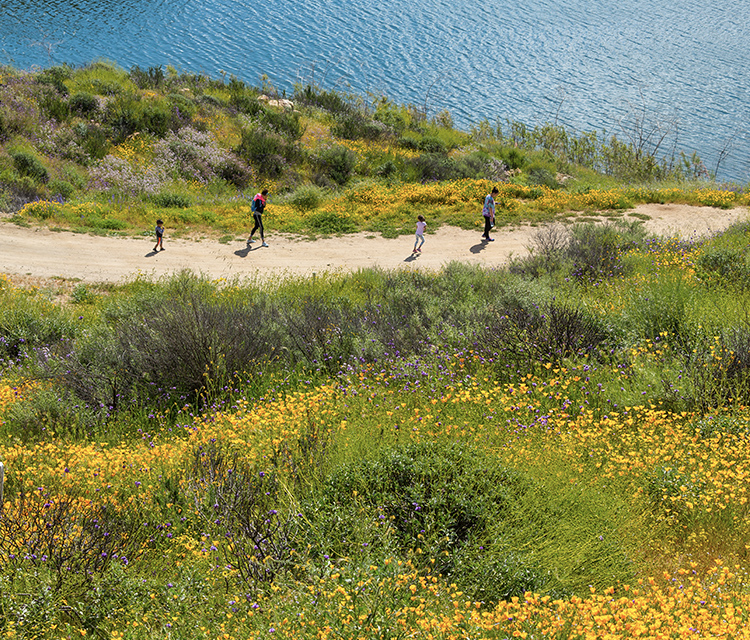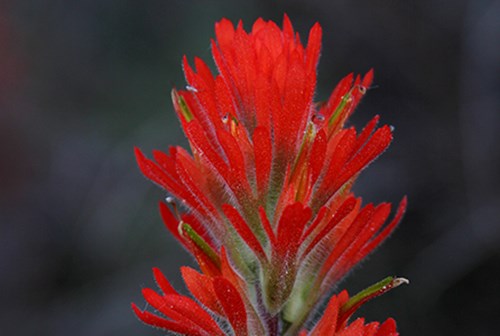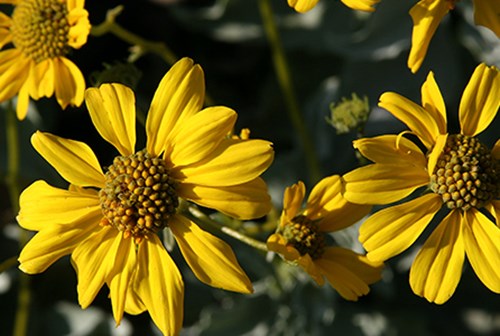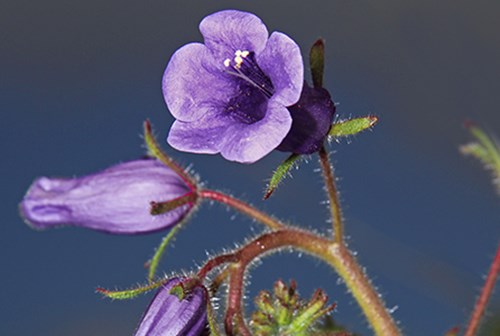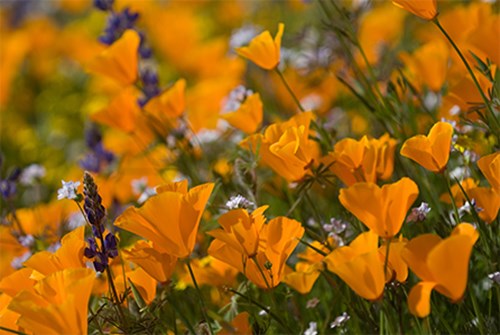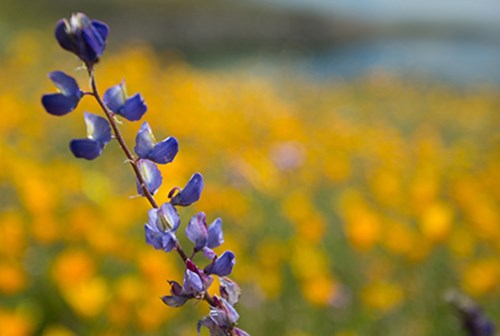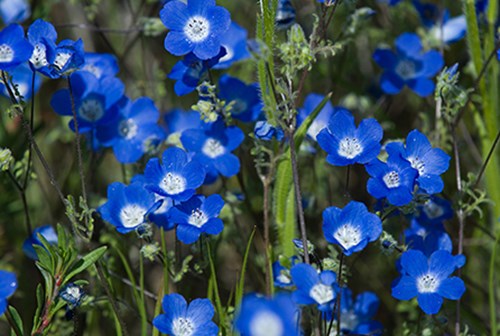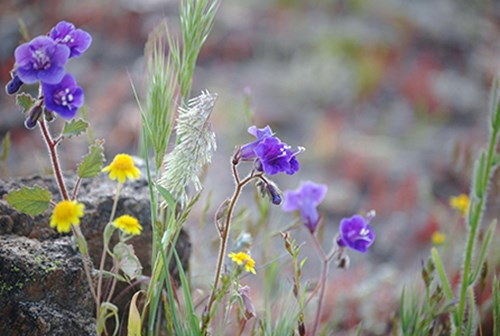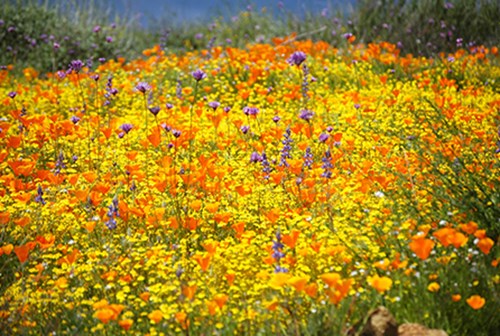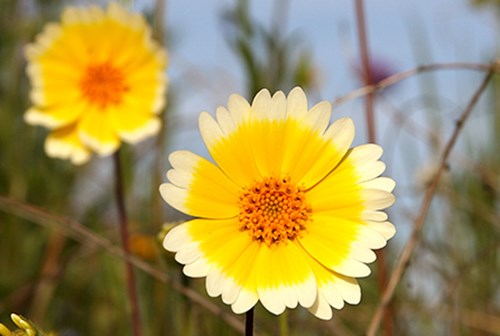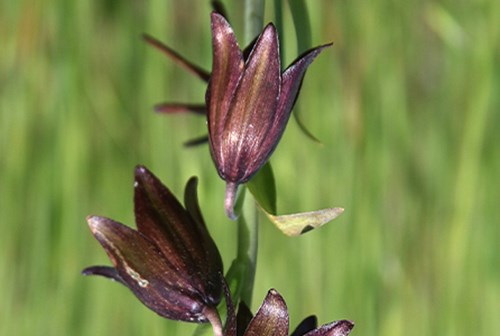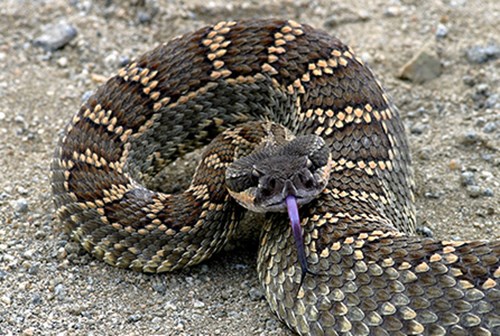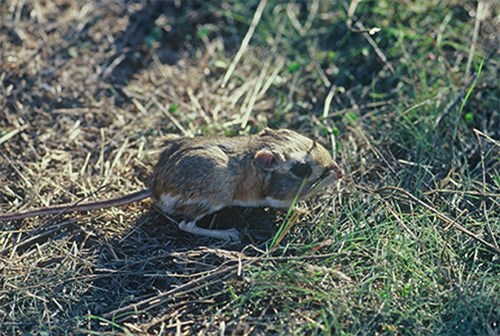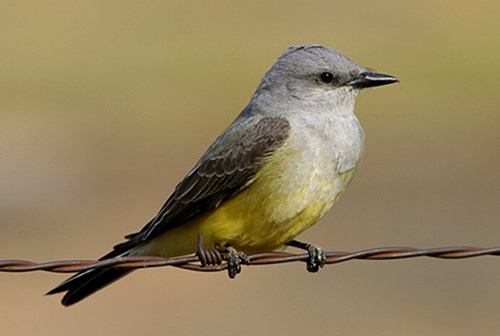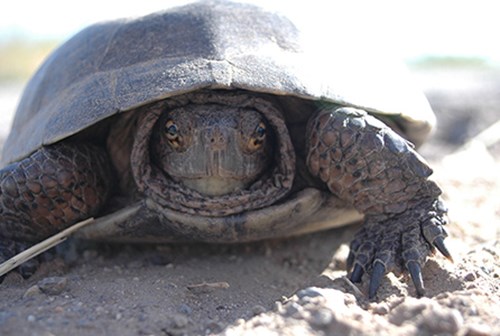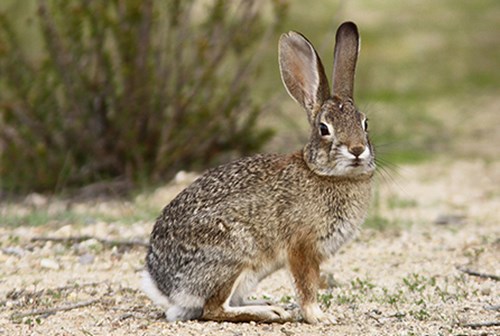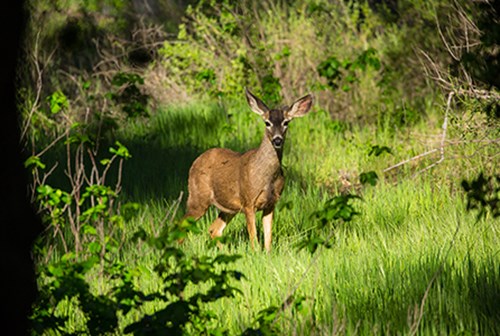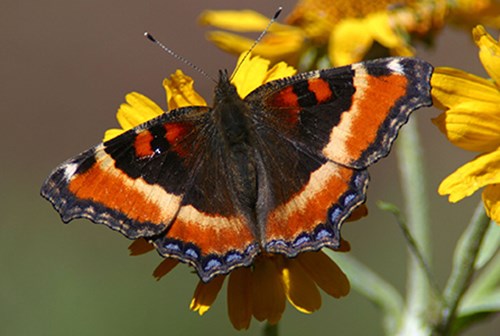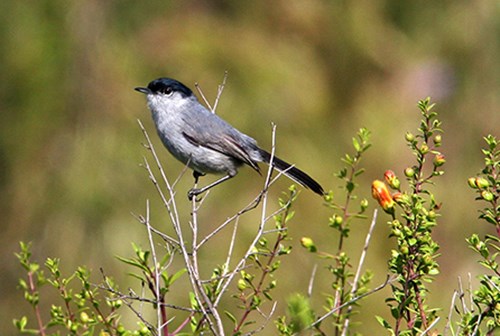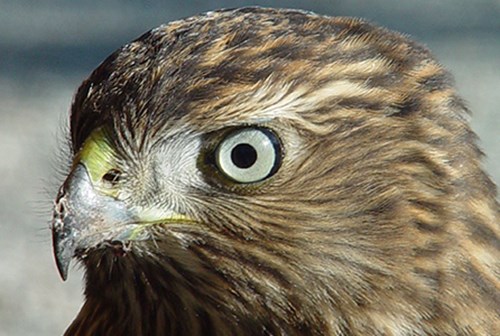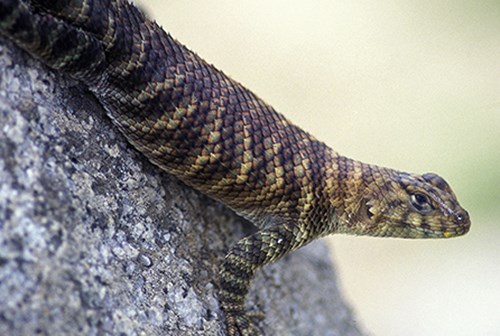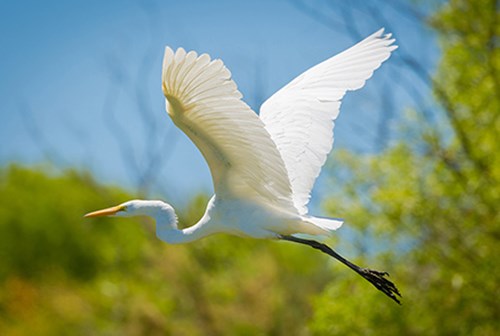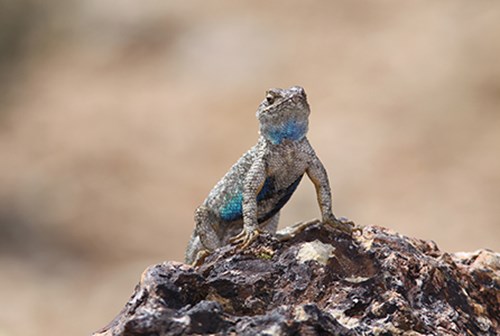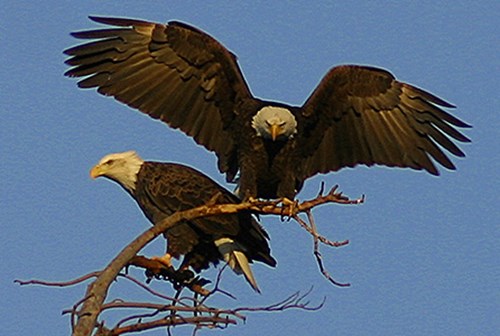Find a Document
Reserves and Habitats
Reserves & Habitats
Hillsides covered in wildflowers. A red-tailed hawk gliding overhead. Seasonal streams sparkling in the sunlight. The quiet majesty of rare oak trees. These are among the gifts of nature that we value and protect as a regional water provider.
A Responsible Footprint
When nature thrives, we all thrive. Metropolitan’s legacy of environmental protection spans decades and touches tens of thousands of acres of revered and protected land. Through substantial investments and partnerships, we have acted to preserve and enhance open space, sensitive wildlife habitats, and critical ecosystems. Metropolitan has set precedent with public and private partnerships that focus on environmental protection of entire ecosystems rather than individual species.
The benefits are multiple and meaningful:
- Protecting sensitive plants, wildlife and their habitats
- Managing and restoring watersheds to maintain clean water supplies
- Providing trails, views and recreational assets that connect people with nature
- Ensuring vast tracts of natural landscapes remain untouched by development
Environmental Stewardship Goes Hand-In-Hand with Infrastructure Investments
Multi-Species Habitat Protection & Preservation
Preserving natural habitat and open space is a critical responsibility shared by everyone. Through long-standing partnerships and commitments, we have played an ongoing role in establishing and managing reserves and open spaces. Just as native species and their habitats are protected and enhanced through these efforts, so too are the well-being of people and communities benefitting from these valuable resources.
Four large-scale multi-species reserves, spanning more than 30,000 acres, form the cornerstone of these environmental investments. In addition, we actively support and partner in several other notable open space and habitat preservation initiatives in the Southern California region, as well as statewide.
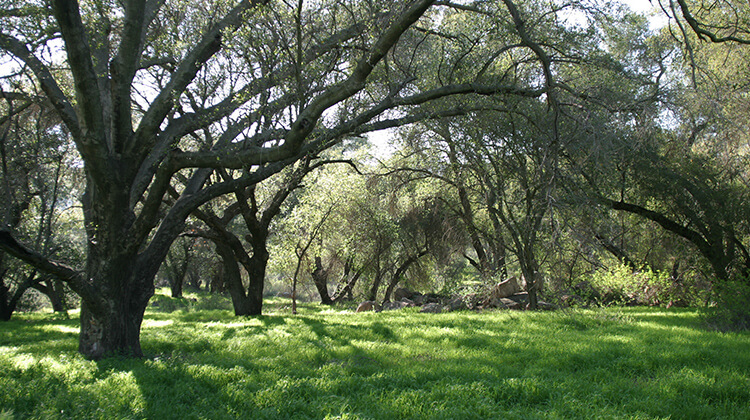
Southwestern Riverside County Multi-Species Reserve
Nearly 13,500 acres of open space are preserved within the Southwestern Riverside County Multi-Species Reserve, located adjacent to Diamond Valley Lake. Created in 1992, the reserve marked California’s first agreement for comprehensive, multi-species protection as opposed to approaches focusing on a single species at a time. The reserve is home to eight distinct types of habitat and protects at least 31 sensitive, endangered or threatened native California bird, animal and plant species.
Habitats in the reserve include shrub, grassland and riparian communities, as well as pristine groves of oak woodlands. Notable species include Stephens' kangaroo rat, California gnatcatcher, Bell’s sage sparrow, San Diego horned lizard, orange-throated whiptail lizard, Payson’s jewel flower, and Parry’s spine flower. Many other species also can be found, including mule deer, bobcats, and coyotes.
The reserve includes 9,000 acres surrounding and connecting Diamond Valley Lake with Lake Skinner via the 2,500-acre Dr. Roy Shipley Reserve, which Metropolitan purchased as partial mitigation for construction of Diamond Valley Lake. We partner with the U.S. Fish and Wildlife Service, California Department of Fish and Wildlife, Riverside County Regional Park and Open-Space District, and Riverside County Habitat Conservation Agency to cooperatively manage the reserve. The reserve contains more than 30 miles of biking, hiking and equestrian trails, including the North Hills, Wildflower, and Lake Skinner trails.
More information can be found here:
Diamond Valley Lake
Native Habitat Conservation, Preservation & Restoration
Multi-Species Reserve
Southwestern Riverside County Multi-Species Reserve
Connecting People & Wildflowers
In the spring of 2017, record-breaking rains followed a brutal drought. One of the natural outcomes was a spectacular wildflower bloom at Diamond Valley Lake. The vast carpets of wildflowers were magnificent. California poppies bloomed in orange. Deep blue arroyo lupines and purple canterbury bells covered hillsides, along with yellow rancher’s fiddleneck, white popcorn flowers, and pink red maids. The “super bloom” attracted thousands of visitors who enjoyed the 1.3-mile wildflower trail.
Two years later, the wildflowers made a repeat performance, creating further opportunity to connect people with nature along these trails. To protect the natural environment, Metropolitan engaged in cross-disciplinary work to keep the trails in top condition, provided helpful signage for the public, and brought in docents who helped to enhance the understanding and enjoyment of all who came to witness these remarkable gifts of nature.
Santa Rosa Plateau Ecological Reserve
The nearly 10,000 acres Santa Rosa Plateau Ecological Reserve is home to 200 species of native birds and 49 endangered, threatened or rare animals and plants, including one rare species of fairy shrimp that exists nowhere else on Earth.
Established in 1991, the reserve protects some of the most unique grassland, chaparral and oak habitats in California. It also contains some of Southern California's last vernal pools (seasonal ponds) that support fairy shrimp, wintering waterfowl, and spring wildflowers.
Other notable species include the western pond turtle, California quail, red-shouldered hawks, coyotes, bobcats, mule deer, mountain lions, and golden eagles, and a stand of Engelmann oak trees, considered one of the largest protected stands of this species in the world.
The Santa Rosa Plateau Ecological Reserve showcases innovative preservation partnerships between Metropolitan, The Nature Conservancy and other conservation organizations, Riverside County Regional Park and Open-Space District, U.S. Fish and Wildlife Service and the California Department of Fish and Wildlife and CDFW. The preserved lands include 3,100 acres originally purchased by The Nature Conservancy and 3,700 acres of additional land purchased with Metropolitan’s assistance as partial mitigation for construction of Diamond Valley Lake.
The reserve has an extensive network of multi-use trails, a comprehensive interpretative program and a visitor center. More information can be found here.
Lake Mathews Multiple Species Reserve
The 5,110-acre Lake Mathews Multiple Species Reserve is managed for native habitat as well as sensitive plant and animal species. Management of the reserve provides critical protections to the watershed surrounding Lake Mathews.
Lake Mathews is an important bird resting and feeding site, especially in winter, when ducks, double-crested cormorants, grebes and eagles are present. The reserve includes non-native grassland and Riversidian sage scrub habitats, which support many sensitive animals such as Stephens' kangaroo rat and the coastal California gnatcatcher. Riparian vegetation types are limited but have a diverse habitat structure important to sensitive birds, including the tricolored blackbird, blue grosbeak, and many species of raptors.
In 2019, Metropolitan's board voted to name the reserve in honor of Lois B. Krieger, who served the first female board chair from 1982 until 1992.
Reference Materials
- MSHCP Volume 1: Conservation Plan
- MSHCP Volume 2: Biological Resources
- MSHCP Volume 3: Agency Agreements
- MSHCP EA/MND
- Conservation Easement Grant to RCHCA by Metropolitan -2005
- Settlement Agreement between San Bernardino Valley Audubon Society, MWD, CDFG and RCHCA - 2002
- Reserve Management Plan - 2013
Upper Salt Creek Wetland Preserve
The 40-acre Upper Salt Creek Wetland Preserve provides protection for unique vernal pool habitat and rare plants. The preserve was established as mitigation for impacts associated with construction of the Eastside Pipeline feature of Diamond Valley Lake. The preserve was established as mitigation for impacts associated with construction of the Eastside Pipeline feature of Diamond Valley Lake
The preserve does not allow for public access and is protected in perpetuity from future development. It serves as a cornerstone for broader regional conservation goals under Riverside County’s multi-species habitat conservation program.
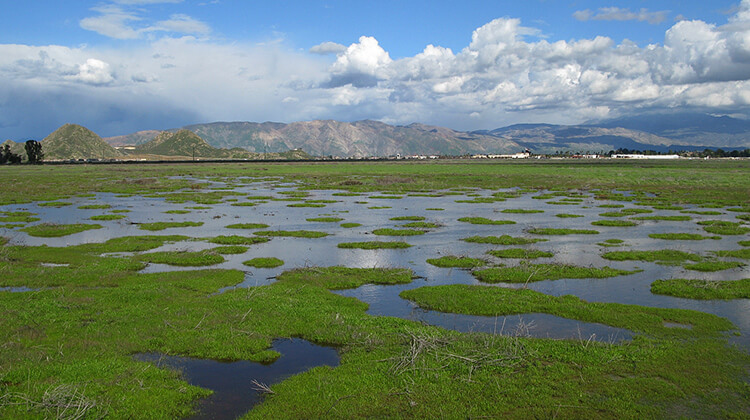
Orange County Central-Coastal Natural Community Conservation Plan/Habitat Conservation Plan
The Orange County Central-Coastal Natural Community Conservation Plan/Habitat Conservation Plan includes nearly 37,500 acres of protected open space. Lands are managed to benefit plants and wildlife that define the character and natural diversity of the region. Metropolitan actively participates in this plan.
Approved in 1996, the plan is a voluntary, collaborative effort between the CDFW and the USFWS involving more than a dozen local government entities and private companies, as well as 11 landowners including Metropolitan. It is one of the first state-federal plans implemented in the nation to mitigate the impacts of development by conserving protected species, expanding native habitat and managing natural ecosystems at a broad landscape-scale.
The plan created a vast preservation area covering a number of habitat types and 39 species, including six federally listed endangered species. Notable among them are coastal sage scrub, grassland and riparian habitats, and the coastal California gnatcatcher, cactus wren, and orange-throated whiptail lizard.
Lower Colorado River Multi-Species Conservation Program
The Lower Colorado River Multi-Species Conservation Program was created to balance the use of the Colorado River’s water resources with the conservation of native species and their habitats. Implemented in 2005, the program involves state and federal agencies and public and private stakeholders in Arizona, Nevada and California representing water and power utilities, municipalities, Native American tribes, and conservation organizations. We are the largest non-federal contributor to the program.
The comprehensive program will create more than 8,100 acres of habitat comprised of conservation areas that benefit a variety of protected and native fish and wildlife species. Another conservation measure is the production of over 1.2 million native fish to augment existing populations. This habitat-based program seeks to contribute to the recovery of threatened or endangered species under the federal Endangered Species Act.
The 50-year program extends over 400 miles of the lower Colorado River from Lake Mead to the border with Mexico, and includes Lake Mead, Lake Mohave and Lake Havasu as well as the historic 100-year floodplain along the main stem of the lower Colorado River. More information can be found here.
Dennis Underwood Conservation Area
Established in 2019, the Dennis Underwood Conservation Area is comprised of 635 acres of former farmland next to the Colorado River that is being transformed into a natural habitat of cottonwood, willow, and honey mesquite trees. The conservation area functions as part of the Lower Colorado River Multi-Species Conservation Program, the historic federal-state partnership launched in 2005 and dedicated to ensuring the health of the river’s diverse ecosystems and wildlife.
The conservation area is expected to attract numerous species such as the yellow-billed cuckoo, vermilion flycatcher, Arizona Bell’s vireo, western red bat, and Colorado River cotton rat. It was created through an easement granted by Metropolitan, which owns the land, to the federal Bureau of Reclamation for the development and management of the habitat in perpetuity.
This conservation area was named for Dennis Underwood, an esteemed Western water expert and former commissioner of the U.S. Bureau of Reclamation who briefly served as Metropolitan’s general manager from April 2005 until his passing in November 2005.
Statewide Environmental Investments
At Metropolitan, we take a statewide view of our environmental stewardship responsibilities and work collaboratively with others to improve habitat and waterways throughout California. This has resulted in significant investments to protect California’s lands, water and wildlife for future generations. These efforts have occurred within the Sacramento-San Joaquin Delta and other key locations in Northern California.

The Sacramento-San Joaquin Delta
The Delta is the hub of the state’s water delivery system. Metropolitan, as a major water contractor, is an active participant in habitat restoration in this important region to where the state's water needs, including environmental, agricultural and urban water needs must be balanced and supported.
We partner in activities designed to help restore the Delta, protect fish species and ensure a more reliable water supply for California. This work includes science-based research and projects to understand food-web relationships and ecosystems, monitor fish populations, restore tidal and non-tidal wetlands, improve habitat and ecosystem health, reduce carbon emissions, and enhance water quality and reliability.
California EcoRestore Habitat Restoration
We have supported habitat management activities in the Yolo Bypass in the Sacramento Valley, including serving as a cooperating agency in the Yolo Bypass Salmonid Habitat Restoration and Fish Passage Project’s Environmental Impact Report/Environmental Impact Statement. This comprehensive federal-state planning process addresses federal requirements for enhanced access to salmonid rearing habitat and increased passage for adult salmonids and sturgeon.


Tule Red Tidal Restoration Project
Metropolitan worked with the State and Federal Contractors Water Agency and the Department of Water Resources to complete the Tule Red Restoration Project in Suisun Marsh to restore tidal marsh wetlands and provide benefits to native fish species.
Battle Creek Salmon and Steelhead Restoration Project
Metropolitan has supported and financially assisted with the Battle Creek Salmon and Steelhead Restoration Project in Northern California, one of the largest cold-water fish restoration efforts in North America. The project involves a partnership between Pacific Gas and Electric Company, Reclamation, USFWS, National Marine Fisheries Service, and CDFW. The effort is focused on restoring almost 50 miles of habitat in Battle Creek and its tributaries within the Sacramento River watershed for threatened and endangered winter-run and spring-run Chinook salmon and steelhead, while maintaining continued production of clean hydroelectric power at the Battle Creek Hydroelectric Project.


Butte Creek Bypass Project
Metropolitan continues to participate with the Centerville Schoolhouse Workgroup, a diverse collection of stakeholders committed to ensuring the future of the creek’s population of spring-run Chinook salmon. Topics of discussion include future science studies and habitat restoration projects.
Butte Sink Creek Bypass Project
Metropolitan is a funding partner on the Butte Sink and Sutter Bypass Project. A collaborative work process has focused on the coordination of study plans that will help stakeholders better understand how fish benefit from the Sutter Bypass and Butte Sink habitats. This will inform future restoration activities.


Lake Oroville
Metropolitan supports the Lower Feather River Habitat Improvement Plan, an adaptive management plan to benefit threatened and endangered fish species. The plan was developed as part of a collaborative settlement agreement to operate the State Water Project’s Oroville facilities for 50 years. Additional measures to improve terrestrial habitat in the area include protecting vernal pool habitat, minimizing disturbances to nesting bald eagles and California red-legged frogs, providing nest cover for waterfowl, and maintaining wildlife nesting boxes.
Contact
Environmental Planning
700 N. Alameda Street
Los Angeles, CA 90012
[email protected]
(213) 217-6337



